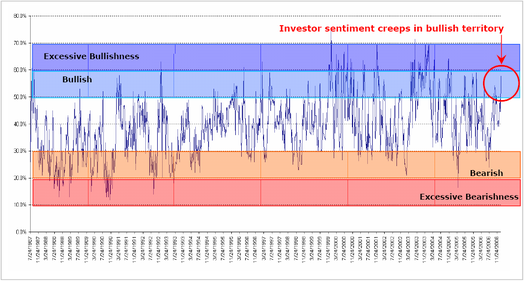AAII The American Association of Individual Investors
Post on: 11 Апрель, 2015 No Comment

There are several ways to measure the performance of a stock, typically on either an absolute or a relative basis. Price change over a specified time period is an example of absolute performance, while relative performance communicates how well a stock has performed compared to some benchmark, usually a market or industry index. In this issue of Stock Investor News. we discuss a relative performance measure, the relative strength index. In Stock Investor Pro. relative strength index fields compare the stocks performance to that of the S&P 500 large-cap index. There are four relative strength index fields, measuring a stocks performance relative to the S&P 500 over the last four, 13, 26 and 52 weeks.
Calculating Relative Strength
Using Relative Strength
For example, lets say you invested in a stock that was up 10% for the year, a gain almost every investor would welcome, es-pecially those focused strictly on absolute terms. However, if the market was up 20% over the same time period, an investor interested in relative performance would not be nearly as happy. The same holds true on the downside as well. Some investors, including well-known guru William ONeil, advocate sell rules based on absolute measuressuch as selling after a stock falls 7% from its high following purchase. While such a strategy does limit the maximum loss you can incur on an investment and is a good idea when investing in highly volatile stocks, you may find times when you are selling based more on the movement of the overall market than that of the company itself. As you can imagine, it would be impossible to hold onto any stock during the 2008 recession (which was a good thing, as it turned out).
Relative strength can also be used to compare two companies in the same industry. This comparison examines the relative strength performance of two stocks and can help you decide whether you should hold one versus the other. Take Dell Inc. (DELL) and Hewlett-Packard Co. (HPQ), both of which are in the computer hardware industry. Comparing the 52-week relative strength of both stocks as of December 14, 2012, we find that Dells relative strength index for the period was 40.5 and Hewlett-Packards relative strength index was 50.6. Both negative figures show stocks that significantly underperformed the S&P 500 index. Again, zero reflects stock performance equal to the market index. Dell has been a slightly stronger price performer over the last year relative to its industry competitor Hewlett-Packard.
Relative Strength Percentile Ranks
Another way relative strength is communicated in Stock Investor Pro is through percentile ranks. Percentile rank shows you how a particular company compares to all the companies in the database. Percentile rank fields are useful in comparing a companys results in a certain area against that of the entire universe of companies, but they are not available for all data points. Within the program tabs, the percentile rank data, if available, is usually designated by Rank or % Rank.














